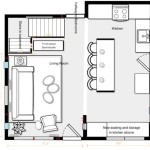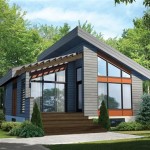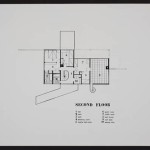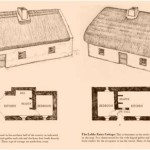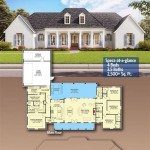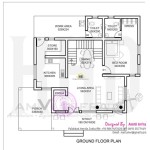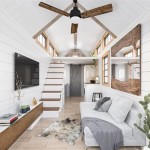3 Bedroom House Plan and Cost: A Comprehensive Guide
Constructing a new home requires careful planning and a thorough understanding of the associated costs. For many families, a 3-bedroom house provides an ideal balance of space and affordability. This article offers a comprehensive overview of 3-bedroom house plans and the factors that influence their construction costs. It examines various design considerations, material options, and strategies for managing expenses to help potential homeowners make informed decisions.
The popularity of the 3-bedroom house plan stems from its adaptability. It can accommodate small families, couples desiring extra space for guests or hobbies, and individuals who appreciate a home office. The size also lends itself to various architectural styles, from traditional to modern, and allows for a range of customization options.
Understanding the Components of a 3-Bedroom House Plan
A 3-bedroom house plan encompasses more than just the sleeping quarters. A well-designed plan integrates living spaces, kitchen areas, bathrooms, and often includes additional features such as a dining room, study, or outdoor living area. Understanding the interplay between these components is crucial for optimizing space and functionality.
The living area serves as the central hub of the home, typically designed as an open-plan space that flows seamlessly into the kitchen and dining areas. This layout promotes social interaction and maximizes the feeling of spaciousness. The size and configuration of the living area should be proportional to the overall size of the house and tailored to the homeowner's lifestyle.
The kitchen is another critical component, often requiring careful consideration of layout, storage, and appliance placement. Modern kitchens often feature islands or peninsulas that provide additional counter space and seating. The choice of materials for countertops, cabinets, and flooring significantly impacts both the appearance and the cost of the kitchen.
Bathrooms are typically designed with functionality and privacy in mind. A 3-bedroom house often includes a master bathroom connected to the master bedroom, as well as a shared bathroom for the other bedrooms. The number of bathrooms and their size can significantly influence the overall cost of the project.
Storage is an essential aspect of any house plan. Closets in each bedroom are standard, but additional storage space should be incorporated throughout the house, such as linen closets, pantry storage in the kitchen, and potentially a garage or basement for larger items. Smart storage solutions can maximize space and minimize clutter.
Outdoor living areas, such as patios, decks, or porches, extend the living space beyond the interior of the house. These areas can be designed for relaxation, entertaining, or outdoor dining, and can add significant value to the home. The size and design of the outdoor living area should be considered in relation to the overall aesthetics and functionality of the house.
Factors Influencing the Cost of a 3-Bedroom House
The cost of building a 3-bedroom house is influenced by a multitude of factors, including the size of the house, the chosen materials, the complexity of the design, and the location of the construction site. Understanding these factors is essential for creating a realistic budget and avoiding unexpected expenses.
The size of the house is a primary driver of cost. Larger houses require more materials and labor, resulting in higher overall expenses. The square footage of the house should be carefully considered in relation to the homeowner's needs and budget. Optimizing the floor plan to maximize usable space can help to minimize the overall size of the house without sacrificing functionality.
The choice of materials significantly impacts the cost of construction. High-end materials, such as hardwood flooring, granite countertops, and custom cabinetry, will increase the cost of the project. More affordable materials, such as laminate flooring, laminate countertops, and stock cabinetry, can help to reduce expenses. It is important to strike a balance between cost and quality to ensure a durable and aesthetically pleasing home.
The complexity of the design also affects the cost of construction. Houses with intricate rooflines, custom architectural details, and unusual layouts require more skilled labor and specialized materials, which can increase expenses. Simpler designs, with straightforward layouts and standard construction techniques, are typically more affordable.
The location of the construction site can also significantly impact the cost of the project. Construction costs vary by region, with urban areas typically being more expensive than rural areas. Site preparation costs, such as clearing land, grading, and installing utilities, can also vary depending on the location. It is important to research local construction costs and regulations before beginning the project.
Labor costs are a significant component of the overall construction cost. Labor rates vary by region and depend on the skills and experience of the tradespeople. It is important to obtain multiple bids from qualified contractors and subcontractors to ensure competitive pricing. Negotiating labor costs and managing the construction schedule effectively can help to minimize expenses.
Permitting and inspection fees are required by local authorities. These fees cover the cost of reviewing the building plans and inspecting the construction work to ensure compliance with building codes. Permitting costs can vary depending on the location and the scope of the project. It is important to factor these fees into the overall budget.
Strategies for Reducing Construction Costs
While building a new home can be a significant investment, there are several strategies that homeowners can employ to reduce construction costs without compromising quality or functionality. Careful planning, smart material choices, and efficient construction management are key to minimizing expenses.
Optimizing the floor plan is a crucial step in reducing construction costs. A well-designed floor plan maximizes usable space and minimizes wasted space, which can reduce the overall size of the house and lower material costs. Simple, rectangular floor plans are typically more cost-effective than complex, multi-angled designs. Careful consideration should be given to the placement of walls, doors, and windows to optimize natural light and ventilation.
Choosing cost-effective materials can significantly reduce construction expenses. Exploring alternative materials that offer similar performance but at a lower price point can help to save money without sacrificing quality. For example, laminate flooring can be a more affordable alternative to hardwood flooring, and pre-fabricated cabinets can be a more cost-effective option than custom cabinetry.
Simplifying the design can also help to reduce costs. Intricate architectural details, such as elaborate rooflines, custom trim, and decorative moldings, can add significant expense to the project. Opting for a simpler, more streamlined design can lower material and labor costs without compromising the overall aesthetics of the house.
DIY projects can also help to reduce construction costs. Homeowners who are willing to take on some of the work themselves, such as painting, landscaping, or installing flooring, can save on labor costs. However, it is important to have the necessary skills and experience to complete these tasks safely and effectively. Some tasks are best left to professionals to ensure quality and compliance with building codes.
Value engineering involves reviewing the design and construction process to identify opportunities to reduce costs without compromising quality or functionality. This can involve exploring alternative materials, simplifying the design, or optimizing the construction schedule. Value engineering should be performed by experienced professionals who can identify potential cost savings without sacrificing the integrity of the project.
Efficient construction management is essential for minimizing costs and ensuring that the project is completed on time and within budget. A well-organized construction schedule, clear communication with contractors and subcontractors, and proactive problem-solving can help to avoid delays and cost overruns.
Consider phasing the project. If budget constraints are a significant concern, consider completing the project in phases. For example, the core house can be built first, and then other amenities like the patio or finished basement can be added later when more funds are available. This allows occupancy and avoids the immediate pressure of a large lump sum payment.
Energy efficiency is also a important factor to consider. While initially it might feel expensive to install energy efficient windows, insulation and HVAC systems, in the long term, it will save significant amounts of money in utilities expenses. It also helps to keep the house comfortable.
Ultimately, a successful 3-bedroom house construction project requires careful planning, realistic budgeting, and effective communication with all parties involved. By understanding the factors that influence the cost of construction and implementing strategies to reduce expenses, homeowners can create a beautiful and functional home that meets their needs and budget.

Image Result For Portable Three Bed Room Building Plan Budget House Plans Low Cost Bungalow Floor

3 Bedroom House Plan A001 Plans Design Kenya

Budget Modern Low Cost Simple 3 Bedroom House Plans In Kenya Wow Image And Visual Re Three Plan Bungalow Floor

3 Bedroom House Plans And Cost In Kenya 2024 Urban Rural Rates To Co Ke

Low Budget Modern 3 Bedroom House Design Nethouseplans

Beautiful 3 Bedroom House Plans Plan In Kerala Elevation Low Cost Floor Budget

House Plans In Kenya The Budget 3 Bedroom Bungalow Plan David Chola Architect

Simple Yet Elegant 3 Bedroom House Design Shd 2024031 Pinoy Eplans

3 Bedroom House Plans And Cost In Kenya 2024 Urban Rural Rates To Co Ke

Best House Plans In Kenya 6 Unique Three Bedroom Plan

